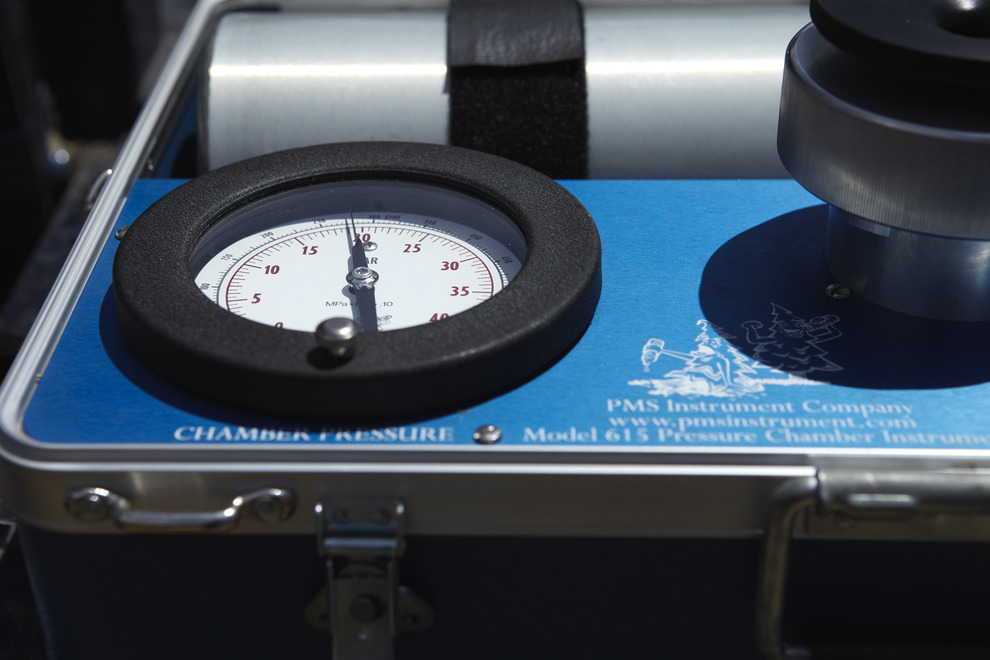As we hit the final stretch of the growing season, effective management of strategic deficit irrigation can make all the difference between a stressful or successful harvest. Maintaining optimal tree stress for your current growing conditions as we approach harvest is critical, as too much stress can negatively impact kernel size and not enough stress can make it difficult to achieve a uniform shake.
With that in mind, growers should look to the pressure chamber tool to understand the actual stress their trees are experiencing. While this tool can be used year-round, it’s especially helpful during this critical time of the growing season.
Why?
Because the pressure chamber is the only tool that quantifiably measures water stress felt by your tress. Knowing your applied water, ground truthing and evapotranspiration rates are important factors to understand for thorough irrigation management, but without the pressure chamber you will get an incomplete picture of what’s really happening in the trees.
Growers who are not familiar with using a pressure chamber may feel like it’s an overwhelming challenge to use it in the field. However ABC, through its online Irrigation Station video series, has removed the guesswork of pressure chamber use for growers with a 3-minute episode demonstrating the basics of its operation. More detailed information on how to use a pressure chamber is also available on page 126 of the Almond Irrigation Improvement Continuum, a comprehensive manual of irrigation and scheduling practices, as well as in ABC’s latest irrigation resource, a one-pager that breaks down each step of how to use a pressure chamber.
Using a pressure chamber will allow growers to effectively implement strategic deficit irrigation via the baseline method. Baseline values for pressure chamber readings have been calculated by the University of California using mathematical models, which have been validated through field experiments in almond orchards.
A baseline value indicates how many “bars” a fully watered almond tree will read on the pressure chamber. One bar is equal to about 1 atmosphere of pressure or 14.7 psi. However, bar readings on the pressure chamber will vary depending on weather conditions such as temperature and air relative humidity. Growers should consult Table 2 on page 136 of the Continuum for a baseline chart of readings under different weather conditions.
It’s important to understand that irrigating to the baseline is not the goal with strategic deficit irrigation; rather, it’s about irrigating at what is called “bars below baseline.” It’s also important to note that the pressure chamber measures in negative bars of tension, so irrigating “below baseline” will mean a higher reading on your pressure chamber gauge.
Growers can watch the Strategic Deficit Irrigation episode of The Irrigation Station for more information about irrigating at bars below baseline using a pressure chamber.

